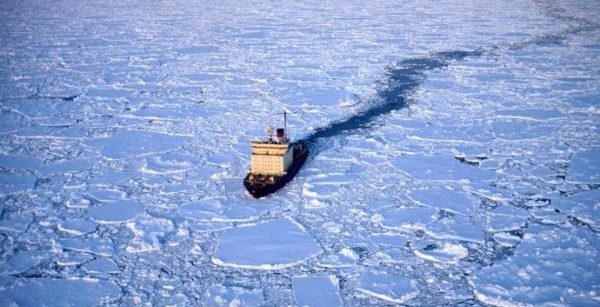‘Boris Sokolov’, the 214 meter long tanker on January 25 arrived in Murmansk after a 6-week voyage from Nansha, China. The vessel was accompanied by the new LNG carrier ‘Boris Davydov’, which was constructed at the Daewoo Shipbuilding and Marine Engineering (DSME) yard in South Korea. Aker Arctic, the Finnish ship design company, reported that the ‘Boris Sokolov’ will be used to transmit gas condensate from Sabetta LNG terminal to European and Asian customers. Also, it could be used as a regular oil tanker.
On December 4, ‘Boris Sokolov‘, the world’s first icebreaker tanker which transports condensate oil was, officially, launched. It was built by Guangzhou Shipyard for a major Greek shipping company.
Earlier, both of the vessels sailed through the Bering Strait and into the Chukchi Sea. The vessels voyaged through the East Siberian Sea, the Laptev Sea and into the Kara Sea.
When entering the Kara Sea, the ‘Boris Davydov’ voyaged to Sabetta, while the ‘Boris Sokolov’ proceeded towards Murmansk.
[smlsubform prepend=”GET THE SAFETY4SEA IN YOUR INBOX!” showname=false emailtxt=”” emailholder=”Enter your email address” showsubmit=true submittxt=”Submit” jsthanks=false thankyou=”Thank you for subscribing to our mailing list”]
It was the first voyage of its kind. There’s thick ice in big parts of the Northern Sea Route and mostly in the eastern part of the area.
According to data from the Russian Arctic and Antarctic Institute the whole East Siberian Sea is covered by two metre one-year ice and older solid ice.
Also the Laptev Sea and the northeastern parts of the Kara Sea have thick ice layers.
Despite the ice conditions, both vessels have Arc7 ice class and break through about two metres thick ice layers.





























































